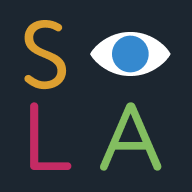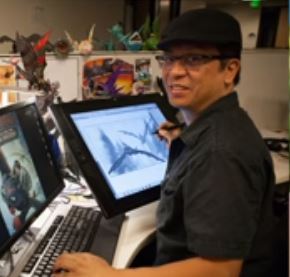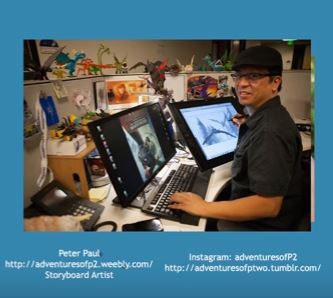- Can you tell us a little bit about yourself or how you got started?
Fresh off college, I began as an illustrator and graphic designer. Company I worked for decided to outsource any art related work and shut down their art department. I got into animation simply by being at the right place at the right time. I was taking classes at the Animation Guild when Warner Bros came to recruit for a movie. My first animation gig was Space Jam. I was hired and trained as an Inbetweener. I did two years of that and decided to get into storyboards which I find more interesting. I am currently a storyboard artist.
2. What’s your daily routine look like?
I normally come in later than most of the crew. I’m not a morning person. Once at my desk, I always check my email or calendar to see if there are meetings or I check with my story coordinator or director too. I usually have YouTube or Netflix on if my work is light but if I’m in the beginning stage of a storyboard, I listen to nothing.
3. Who are you inspired by?
Friends.
4. Do you have a mentor or teacher that was influential on you, while you were studying in college?
Philosophically, failure is my mentor. I’m a trial and error type and most of what I do now including my successes was from trying but I had many failures along the way.
I had one teacher in college who was somewhat influential. I liked his teaching style. Easy going personality. Open minded about ideas on art specially when thinking outside the box. I think he liked that I didn’t always do what the rest of the class was doing.
5. What has been one of your favorite projects to work on?
I have many favorite projects but Alvin and The Chipmunks: The Squeakquel comes to mind because it was an exciting experience to work on a live-action movie and see how production works and I made some good friends too.
6. What medium do you work with predominately now? And do you use the digital painting medium?
I work primarily on Photoshop whether it is for work in storyboarding or for personal work like my illustrations or fan art. On a few occasion, I will draw with pencil and paint with watercolor.
7. How important is social media for an illustrator now? And how are you using it?
Very important. I believe it helps create an awareness of your art and a following of people who are interested in your art as well. I don’t use it daily as many artists do. Networking is an important aspect of the entertainment industry so I use social media as a tool to network but I am not dependent on it.
8. How important is a blog/website ? How often do you update your own blog/website and what can illustrators do to get more traffic to their sites?
I do not blog but I do have a website for my professional work. It simply is so convenient to show your work on a website than with a physically portfolio. To get more traffic to their sites, they simply need to promote any way they can. Promote on social media, bring business cards with the site link, and do shows or events.
9. Where do you think the field of Illustration is headed in 5 years or 10 years?
Working in the animation industry, I have noticed a surge in interests among my colleagues to do illustrations. I think many feel a need to be creative outside work and use traditional medium since we work mostly in digital. My guess is that the field of Illustration will continue to flourish in 5 and 10 years but there will be a mashup of traditional and digital mediums including virtual illustrations.
10. What advice do you have for illustrators beginning and pro?
If you want to get better, never stop learning. If you feel like illustration as a profession isn’t working out, quit. There is a whole world of possibilities out there.
11. Where can we see more of your work? And watch your informative videos?
My work can be seen on social media: Instagram, Facebook, Twitter @adventuresofp2 or my portfolio site: www.adventuresofp2.weebly.com. I believe there is a handful of videos I did for SILA on the SILA YouTube*page.
12. Where can we purchase your books?
I don’t have any books though I have some sketchbooks that I sell at conventions.
Note from Alyce from the office: Peter is also teaching classes at the Society: si-la.org/classes


